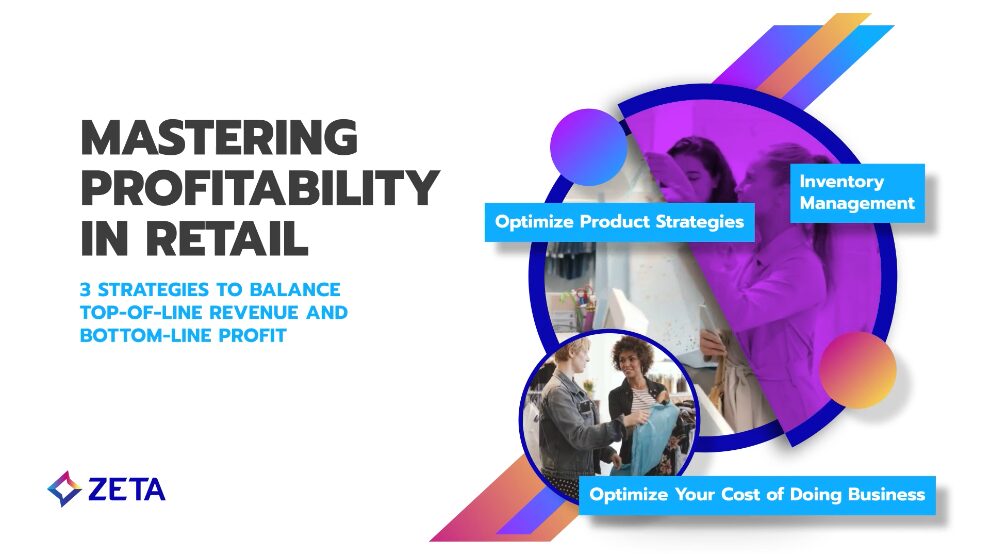
A Silent Shift in Traditional Brand Loyalty is Transforming Retail
A silent brand loyalty shift is quietly transforming the retail landscape. This significant, yet often understated, trend is reshaping how consumers interact with brands across industries.
Consumers—particularly millennials and Gen Z—are moving away from long-established brand allegiances, driven by changing expectations around value, personalization, and convenience.
In today’s market, price sensitivity, economic pressures, and the growing influence of digital platforms are prompting shoppers to prioritize experiences, trendy and novelty goods, and immediate gratification over brand heritage and legacy.
This erosion of brand loyalty is most evident in younger consumers, who are more willing to explore new brands, especially those that offer better value, align with their personal values, or provide a superior digital experience. In this new loyalty landscape, success depends not on brand history but on the ability to meet the dynamic expectations of the modern consumer.
In this article, we’ll dive deeper into the reasons why it’s happening, how it’s impacting different generational cohorts, and the ripple effect across all retail sectors.
Brand Loyalty is Declining: What’s Causing the Shift?

Historically, brand loyalty was built on trust, familiarity, and consistent quality. Consumers would stick with the same brands for years, often influenced by family traditions, regional availability, or limited choice. This was especially true before Amazon and online shopping, where consumers were limited to the brands and products they could find locally.
However, because of the change in commerce, today’s consumers—especially younger generations—are showing less loyalty to specific brands and are more open to experimenting with new products, companies, and experiences.
This decline in traditional brand loyalty is characterized by several key behaviors:
- Frequent brand switching: Consumers are more willing to try new brands, whether it’s for a better deal, a unique experience, alignment with their values, or because they were influenced. Experimentation, and the hope of finding a better option, characterizes today’s shoppers.
- Value-driven choices: Price sensitivity, product quality, and convenience are more influential than brand recognition. This is evidenced by the concept of “dupes” and the prevalence of Amazon off-brands offering essentially the same products as legacy brands, at a fraction of the price.
- Skepticism toward legacy brands: Many consumers, especially Gen Z and millennials, are increasingly skeptical of large, well-established brands, preferring smaller, independent, or niche companies they perceive as more authentic. The other side of this is a resurgence of popularity of some legacy brands, like Doc Martens and Levis. Some legacy brands are losing quickly, while others are thriving.
- Emphasis on experiences over products: People are prioritizing unique or memorable experiences over simply owning products from legacy brands.
All this to say: Brand loyalty has changed. The old way of thinking about loyalty, both as brand affinity and loyalty programs, is no longer effective. Brands must consider generational differences and how to win in this new environment.
The Generational Impact
We’ve mentioned younger consumers, but this shift in loyalty has implications across all generations.
Gen Z (~1997-2012)
This generation is leading the charge in brand experimentation and skepticism toward traditional brands. Their loyalty isn’t easily won by legacy status alone; they care more about values, inclusivity, and social impact. Gen Z is quick to abandon brands that don’t align with their beliefs or fail to keep up with trends. They’re also hyper-connected, so they rely on social media, peer reviews, and influencers more than advertising or reputation.
Impact: Retailers are seeing that for Gen Z, loyalty is conditional. Gen Z will remain loyal to a brand only as long as it appeals to them and continues to deliver innovation, relevance, and authenticity.
Millennials (~1981-1996)
Millennials are value-conscious and often choose brands based on price and convenience, particularly after facing financial challenges like student loan debt and the Great Recession. While they still seek quality, they tend to favor brands that offer strong digital experiences and personalized services. Sustainability and ethical practices also play a big role in their purchasing decisions, making them more likely to switch if they perceive a brand as unsustainable or inauthentic.
Impact: For millennials, loyalty can be fleeting if a better value or socially responsible option presents itself. They prefer brands that offer personalization and a frictionless shopping experience, whether online or in-store.
Gen X (~1965-1980)
Gen X still values brand consistency and reliability, but they, too, have adapted to a more fragmented marketplace. While they may be more loyal than younger generations, they’ve become savvy online shoppers who are influenced by convenience, price, and product availability. Gen X consumers often maintain loyalty to brands they’ve trusted for years but are willing to switch if those brands don’t meet modern expectations or start to fail them in some way.
Impact: Gen X is somewhat more brand loyal, but they are increasingly influenced by the same factors driving younger generations, such as digital convenience and competitive pricing.
Baby Boomers (~1946-1964)
Baby Boomers traditionally have had the strongest brand loyalty, often sticking with trusted names over the decades. However, as they engage more with digital platforms and e-commerce, even this generation is less likely to stay loyal to a brand that doesn’t offer seamless online shopping, discounts, or personalization. Convenience and reliability are their main drivers, but they’re still open to switching if a brand consistently fails to deliver. Though they will be slower to switch, and less inclined to seek out alternatives when the old standby will do.
Impact: Baby Boomers may be the most loyal group, but their expectations for digital convenience and service have risen, meaning even long-standing relationships can be disrupted.
Why it’s Happening: The Reasons for the Loyalty Shift

Let’s now dive into the why behind this trend. Here are just a few of the reasons that consumers across all regions, demographics, and socioeconomic status are becoming less brand loyal.
1. Access to information and options
With the internet and e-commerce platforms, consumers have unparalleled access to a wide variety of brands, products, and reviews. Shopping is no longer restricted to the local store; people can compare prices, read reviews, and discover new brands globally, all from their smartphones.
Influencers across all channels are impacting the purchase funnel from trial of a brand to pantry loading on Amazon. This has diluted the power of brand loyalty, as consumers can easily find alternatives. With so many products to try—and more appearing daily—there’s less motivation to be loyal anymore.
2. Value-driven shopping
Economic pressures, particularly rising inflation from grocery prices to utility and stagnant wage growth, have made consumers more price sensitive. Shoppers are looking for the best deal, with less regard for brand loyalty.
Subscription services, discounts, and convenience often outweigh the emotional connection they once had to a brand. Price-conscious consumers are increasingly switching between brands based on who offers the most value at any given moment.
3. Rise of niche brands and direct-to-consumer (DTC) models
Niche and direct-to-consumer (DTC) brands have exploded, offering products that are more personalized, unique, and often at a lower cost than established brands. These DTC brands engage customers through social media, influencers, and highly targeted digital marketing.
Younger consumers, especially, are drawn to these brands because they offer a feeling of exclusivity, innovation, and relevance. And because of their business models, they often come at a discount over legacy brands, which is also appealing to consumers.
4. Focus on personalization and experience
Consumers now expect a personalized experience from retailers, whether it’s through product recommendations, tailored marketing, or loyalty programs. Legacy brands that fail to deliver these experiences are losing ground to those that can offer a more bespoke shopping journey.
Personalization has shifted the loyalty paradigm: customers are more loyal to their experiences than the brand itself.
5. Authenticity and corporate values matter
Consumers, particularly Gen Z and millennials, are increasingly demanding transparency and authenticity from brands. They want to support companies that share their values on sustainability, social justice, and ethics. Brands that are perceived as disingenuous, outdated, or untrustworthy are quickly abandoned, while those that align with current cultural values can build deeper, more meaningful relationships with their customers.
6. Omnichannel disruption
The blending of online and offline shopping has made it easier for consumers to switch between brands. Consumers expect seamless integration across channels, and if a brand’s omnichannel experience doesn’t meet expectations, shoppers are quick to switch to competitors who provide more fluid, cohesive experiences between digital and physical shopping.
There are other reasons for the silent shift away from traditional brand loyalty, but these are the primary drivers in today’s retail landscape.
Where is Consumer Loyalty Shifting in 2025?

Brand loyalty isn’t disappearing, it’s simply morphing into something new (and more fluid). Let’s discuss this transition in the context of two popular retail brands, Temu and Shein.
Temu and Shein are disrupting traditional retail and stealing consumer loyalty by capitalizing on several key factors: aggressive pricing, hyper-personalization, and a superior digital experience. These fast-fashion and discount marketplaces are revolutionizing the way consumers—particularly younger generations—shop.
Here’s how they’re successfully winning over former loyalists from established brands:
Ultra-low prices and value proposition
Both Temu and Shein are known for offering products at rock-bottom prices, which appeals directly to price-sensitive consumers. With inflation and economic pressures making consumers more cautious about their spending, these brands provide incredible value for the price, allowing shoppers to purchase trendy products without breaking the bank.
- Temu is known for its wide range of incredibly low-priced goods and has become synonymous with bargain shopping. It offers everything from electronics to fashion at prices that undercut traditional retailers, often through discounts, flash sales, and aggressive promotional strategies.
- Specializing in fast fashion, Shein constantly churns out trendy, stylish clothing at a fraction of the price of competitors. Their ability to produce clothes quickly and cheaply while reflecting the latest trends draws in consumers who are looking for fresh, affordable fashion. Shein’s price-to-product speed has made it especially attractive to Gen Z and millennials, who value novelty and variety.
Rapid trend cycles and mass inventory
Both platforms excel at capitalizing on fast-moving trends, especially in fashion. Their ability to turn trends into mass inventory in a matter of weeks keeps their product offerings constantly fresh and relevant.
- By offering a massive range of categories, Temu casts a wide net, positioning itself as a one-stop shop for various needs beyond fashion, including home goods, gadgets, beauty products, and more. This breadth attracts customers looking for deals across multiple categories.
- Shein’s rapid product turnover and ability to keep up with micro-trends set it apart from traditional retailers. Consumers, especially younger ones, are drawn to its “fast fashion on steroids” model. With thousands of new styles dropping every day, Shein creates a sense of urgency and excitement around its products, encouraging frequent visits and purchases.
Hyper-personalization and AI-driven engagement
Both brands leverage advanced AI and machine learning to create highly personalized shopping experiences, understanding consumer behavior in real time and tailoring recommendations accordingly.
- Shein uses data to monitor browsing habits, purchase patterns, and social media trends, offering personalized recommendations that encourage repeat purchases. Shein’s app and website create a seamless, addictive browsing experience, with highly targeted product suggestions and flash sales tailored to each user’s interests.
- Temu has also mastered personalization, ensuring that consumers are met with deals and product suggestions that reflect their previous purchases and browsing patterns. Their AI-powered recommendation engines make the shopping experience feel intuitive and tailored, which deepens consumer engagement.
Gamification and social commerce
Both platforms utilize gamification and social commerce tactics to build engagement and encourage loyalty, making shopping feel like a fun, interactive experience.
- Temu employs in-app games, flash sales, and referral programs that reward users with additional discounts or free items, making the app not only a shopping destination but a source of entertainment. The addictive nature of these strategies helps build habitual engagement, encouraging users to return frequently.
- Shein uses its social commerce strategy by encouraging customers to share their purchases on social media, creating user-generated content that fuels viral marketing. Influencer collaborations, try-on hauls, and user-generated reviews are a key part of Shein’s growth. Their “Shein Points” system, which rewards users for reviews, photos, and frequent purchases, creates an ecosystem where shoppers feel rewarded for their loyalty.
Omnichannel engagement and seamless mobile experience
Both brands prioritize a seamless mobile experience, catering to consumers who primarily shop on their phones. Their apps are user-friendly, fast, and packed with features that create an engaging shopping environment.
- The Shein app is optimized for mobile shopping, with simple navigation, quick checkout, and real-time notifications about sales, deals, and restocked items. They have mastered the art of push notifications, keeping consumers hooked and informed of time-sensitive offers, thus creating a sense of urgency.
- Similarly, Temu’s mobile-first strategy appeals to on-the-go shoppers who want convenience and speed. The mobile app is designed to make shopping feel as effortless as possible, with clean navigation, one-click checkout, and personalized alerts that ensure users never miss a deal.
Influencer and social media dominance
Shein has capitalized on influencer marketing and social media trends to boost brand loyalty among younger audiences. Temu is now following suit, leveraging social media to build brand awareness and loyalty.
- Shein dominates platforms like Instagram, TikTok, and YouTube, partnering with influencers who showcase its latest styles and offer discount codes to their followers. This has built a strong sense of community around the brand, especially among Gen Z shoppers, who are highly influenced by what they see on social media.
- Although newer, Temu has quickly ramped up its presence on social media, often through user-generated content and influencers showcasing the range of ultra-cheap goods they’ve purchased. Temu’s viral campaigns help build brand trust and attract curious shoppers.
The Impact on Other Retail Sectors
As just discussed, Temu and Shein are stealing market share from a wide range of brands across multiple sectors, but primarily from established fast fashion retailers, discount stores, and department stores. These brands are losing ground to the aggressive pricing, rapid trend cycles, and digital engagement strategies of Temu and Shein.
Here are the key brands and sectors impacted.
Fast fashion giants
Shein and Temu are directly competing with traditional fast fashion retailers by offering even lower prices and faster trend adoption. Many consumers are shifting away from these established brands because they see better value and trend access on Shein and Temu.
- H&M: Once a leader in fast fashion, H&M is facing stiff competition from Shein, which offers a wider range of trendy products at lower prices. Shein’s rapid design cycle, often releasing thousands of new items daily, gives it an edge over H&M’s more methodical collections.
- Zara: Known for its “fast fashion” strategy, Zara still has strong brand equity but is losing younger customers who see Shein as a faster, more affordable way to access the same kinds of trends. Shein’s ability to mimic runway trends almost instantly has made Zara’s fast-fashion approach seem slow by comparison.
- Forever 21: Once a favorite of budget-conscious shoppers, Forever 21 has been hit hard by the rise of Shein. Both brands target the same demographic, but Shein’s ultra-low prices, larger product selection, and influencer-led marketing have significantly eroded Forever 21’s market share.
Discount retailers
Temu’s ultra-low prices on a wide variety of products are taking market share away from major discount retailers that traditionally cater to cost-conscious shoppers.
- Walmart: Temu is directly competing with Walmart on price and product variety, particularly in non-perishable consumer goods like clothing, electronics, and household items. While Walmart remains dominant, partially because of their brick-and-mortar presence, Temu is appealing to younger, mobile-first shoppers who are drawn to its gamified, deal-driven shopping experience.
- Target: Known for its affordable yet stylish products, Target is feeling pressure from Temu, particularly in fashion and home goods. Temu’s ability to offer deep discounts and frequent flash sales on similar items makes it a tough competitor, especially as price sensitivity increases.
- TJ Maxx/Marshalls: These off-price retailers, part of the TJX Companies, are known for offering name-brand fashion and home goods at a discount. However, Temu’s prices undercut even these discount stores, and its convenience appeals to customers who prefer the ease of online shopping over browsing in physical stores.
Department stores
The traditional department store model, already under pressure from e-commerce, is facing increased competition from both Shein and Temu, especially in the fashion and accessories segments.
- Macy’s: Shein’s dominance in affordable fashion, particularly for Gen Z and millennial shoppers, is drawing business away from Macy’s (and other comparable brands), which has struggled to attract younger customers. Temu’s low-cost offerings across various categories are also appealing to price-sensitive shoppers who might have once turned to Macy’s for deals.
- Nordstrom Rack: The discount arm of Nordstrom, which focuses on offering fashionable items at reduced prices, is facing growing competition from Temu and Shein. Both platforms’ ability to offer fashionable goods at much lower prices, often with a greater range of options, is attracting customers who might otherwise shop at Nordstrom Rack.
Mid-market fashion brands
Mid-market brands that rely on affordability but don’t compete purely on price are losing share to Shein, which can deliver similar-looking fashion at much lower prices.
- Gap/Old Navy: Both Gap and Old Navy, once stalwarts of accessible, family-friendly fashion, are losing customers to Shein’s trendier, cheaper clothing options. Shein’s ability to replicate popular styles at a fraction of the cost makes it appealing to shoppers who once relied on these brands for affordable fashion basics.
- American Eagle: Shein is taking share from youth-oriented retailers like American Eagle by offering similar casualwear and trendy apparel at much lower prices. Shein’s constant inventory refreshes and price advantages make it difficult for American Eagle to retain those younger customers.
Online fashion retailers
Shein’s rise has also directly impacted other online-focused fashion retailers, many of which target the same digitally savvy, trend-conscious demographic.
- ASOS: Known for offering a wide range of trendy, affordable fashion, ASOS is being challenged by Shein’s even lower prices and faster inventory turnover. ASOS appeals to similar audiences, but Shein’s ability to churn out new styles at a rapid pace gives it a significant edge.
- Boohoo: Another fast-fashion brand that focuses on the younger demographic, Boohoo is losing share to Shein’s dominance in ultra-affordable, trendy clothing. Both brands target the same audience, but Shein’s scale and price advantage are winning over consumers.
Home goods and accessories
Beyond fashion, Temu is stealing share from established brands in home goods, electronics, and accessories by offering incredibly low prices and appealing to shoppers looking for deals.
- Bed Bath & Beyond: Although focused on home goods, Bed Bath & Beyond has faced significant challenges, and Temu’s low prices on household items are further undercutting it. Customers can find similar products on Temu at a fraction of the cost, making it an attractive alternative.
- IKEA: While not a direct competitor in terms of physical furniture, Temu’s low-priced home accessories, decor, and small household items are appealing to the same budget-conscious shoppers who might have once turned to IKEA for affordable home products.
Conclusion
The shift away from traditional brand loyalty is more than a passing trend; it signals a fundamental change in how consumers approach retail.
Today’s shoppers—particularly younger generations—are prioritizing value, personalization, and experiences over legacy and brand history. This evolving loyalty landscape challenges retailers to rethink their strategies and adapt to a more dynamic and competitive environment.
To stay competitive and capture the loyalty of modern consumers, retailers must:
- Embrace hyper-personalization: Use data-driven strategies to deliver tailored experiences, product recommendations, and targeted marketing.
- Enhance digital and omnichannel capabilities: Ensure seamless integration across online and offline channels to meet consumers where they shop.
- Prioritize value and affordability: Offer competitive pricing, discounts, and loyalty rewards that resonate with price-sensitive shoppers.
- Stay agile with trends: Continuously update product offerings to reflect current trends and meet the demand for novelty and immediacy.
- Align with values and authenticity: Demonstrate transparency, sustainability, and ethical practices to build trust with socially conscious consumers.
- Leverage social commerce and influencers: Engage with consumers through social media, influencer partnerships, and gamified experiences to build community and drive repeat engagement.
Retailers that adapt to these shifting priorities will not only survive but thrive in this new era of consumer loyalty. Learn more about how Zeta can help.
Want to see Zeta in action?





